“Are fires good or bad for the forest?”
I ask my students. They respond with a variety of thumbs up and down.
“Why are they bad?” I ask one of the more adamant students.
“They kill animals!” He answers, and I can imagine the picture in his head: Bambi and all his friends crying as a massive inferno of flames engulfs their home.
Too often we are presented with this narrow view of fires because in most of our experiences, fires are bad. Many times students have either been personally affected by forest fires or have relatives that have been affected. Blame it on the media, the government, or our innate human draw toward disaster, but everyone seems to pay attention to the drama of a forest fire and not to the aftermath.

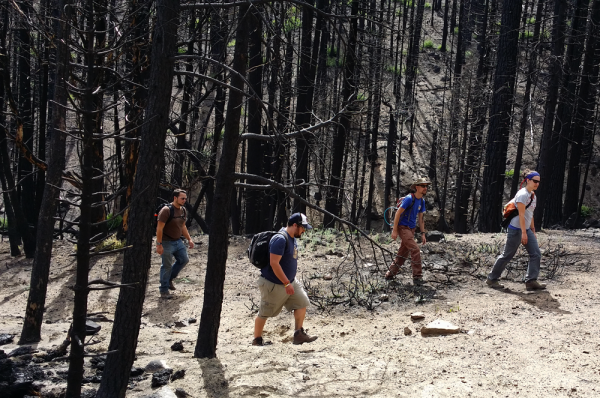
Wildfire is not only natural to our forest but necessary to the health of our ecosystem. Just last summer, in our San Bernardino National Forest, the Lake Fire consumed 31,359 acres of national forest wilderness just south of us, and we can see the burn on the next hillside – the charred poles of scorched tree trunks and white ash beneath. It looks pretty bad, right?
As the Lake Fire burn area begins to recover, we should take this opportunity to watch and learn from the beautiful revival process that will take place. Not only is it scientifically interesting to watch a tiny green seedling stretch its leaves to the sun amidst the ash and burned trees, but I believe that something about that cheerful defiance of destruction can inspire students in their daily lives as well. 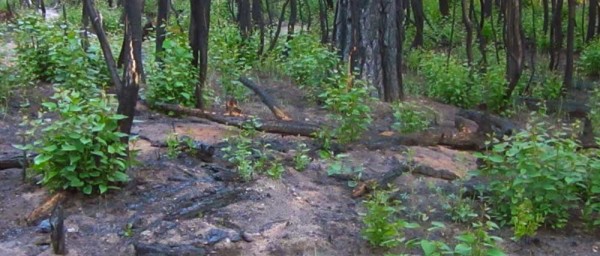
For now, let’s focus on the science of fire succession
Fire ecologists often refer to this process of rebirth after disturbance as “succession”. Generally, succession occurs in stages, the first stage is when super-intensely burned areas are recolonized by bacteria, fungi and plants. Next, small plants like grasses and flowers that only live for one year move in, followed by a stage dominated by bushes and plants that need lots of direct sunlight. Eventually the new trees grow up to a point where they form a forest that – when left alone – wouldn’t change much over time unless there was another disturbance. We call this a “climax community.”
The whole process can take hundreds of years, and different parts of a burn area could be at different stages of succession at the same time. This exact process is variable depending upon the severity of the fire, the richness of the seed bank in the ground, the availability of resources, climate, weather and more. Thus it is very hard to say specifically what we can expect to see happen in the Lake Fire burn area, however, we can hypothesize and watch the process unfold.
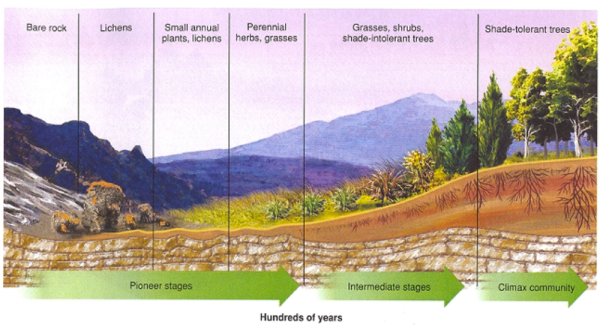
Low Intensity Burns
Many plants in this area have adaptations that help them survive low intensity forest fires. For example, Jeffrey and Ponderosa Pines have thick, fire resistant bark that protects the inner living tissue.
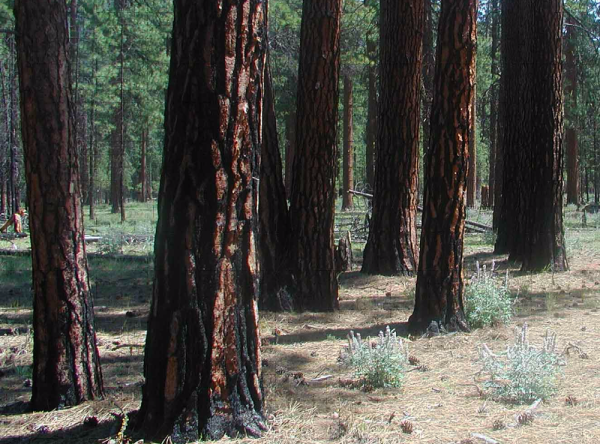 Frequent, low intensity fires make the trees thicken their bark, helping them to survive future fires. Also, these pines are able to independently lose their bottom branches (a process called “self pruning”) in order to keep their branches farther from a fire on the forest floor. However, the development of these adaptations often requires stimulation or a push from frequent, low intensity fires. But how often is “frequent”?
Frequent, low intensity fires make the trees thicken their bark, helping them to survive future fires. Also, these pines are able to independently lose their bottom branches (a process called “self pruning”) in order to keep their branches farther from a fire on the forest floor. However, the development of these adaptations often requires stimulation or a push from frequent, low intensity fires. But how often is “frequent”?
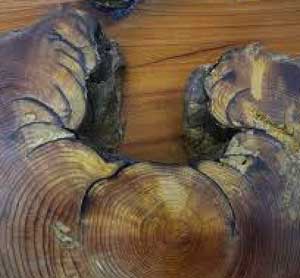
Ingram, Kim. Tree cookies, horizontal slices from a tree trunk, are another tool used to estimate the total number of fire events in an area and how often a fire occurred in a tree’s life, as well as how the tree recovered from the fires.
There are many different ways to measure how often fire has historically burned this area. Typically, we can measure the number of years between fire scars left on trees. As a fire travels uphill, it creates an eddy of heat on the uphill side of the tree which can kill the outer cambium tissue underneath the bark which then prevents the tree from growing out from that area and makes the tree very susceptible to future scarring. By counting the tree rings (indicating years) between each scar and taking an average, we can determine the average fire return interval.
Resilient pines are often great trees to record this information. Surveys of Jeffrey Pines in our region indicate that historically (pre 1860), fires occurred about every 14 years, mostly low severity fires that left trees alive but burned all the debris on the forest floor. However since 1907, the average number of years between fires has increased from 14 to 66 years 1. This occurred when humans started to put fires out to protect ourselves and our economic interests, but by suppressing fires, we have allowed dead logs and other fuels to build up on the forest floor. Now, fires can climb into the canopy of trees and burn much hotter.
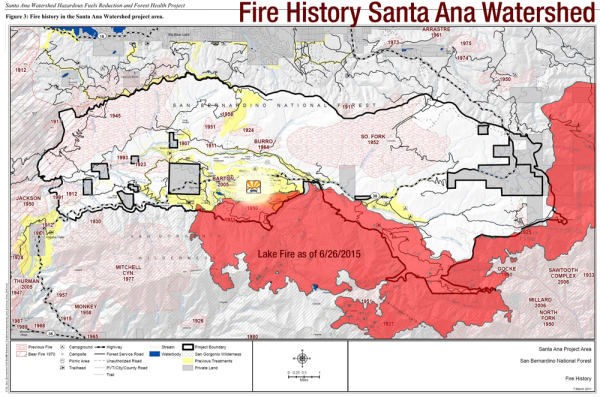
Mid-Intensity Burns
Sometimes fires get hot enough to burn the needles off trees and burn the bushes on the ground – but don’t get hot enough to kill them. Many times, if you can see any green left on a pine tree after a fire the tree will be able to survive. Some trees, like the Lodgepole pine, have an adaptation where they only release seeds after a fire (why do you think a tree might only release a seed after a fire has killed all the other plants?) Many other seeds in the seedbank are adapted to start growing only after the heat and chemical cues from fires.
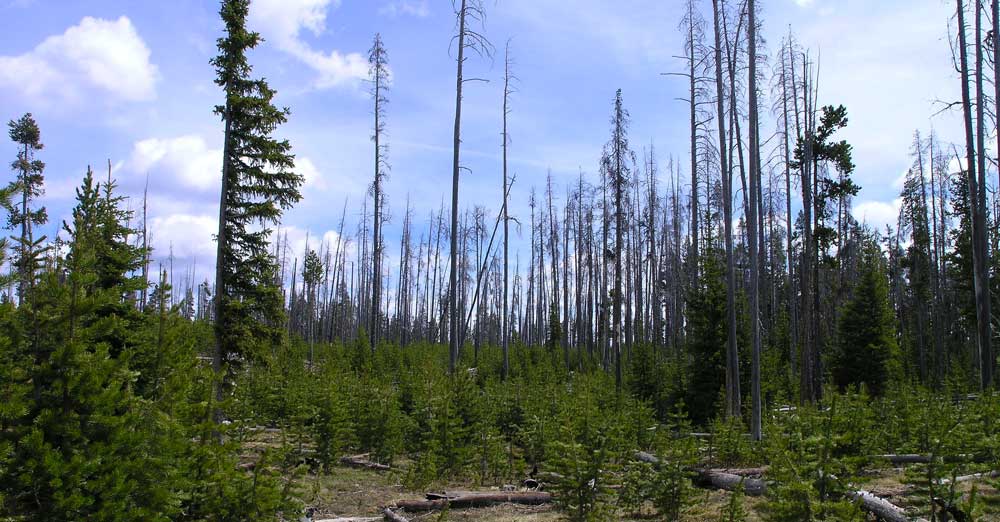 Other trees and bushes could have been killed above ground, but not below ground. One of the most common trees in our forest is the California Black Oak. When a fire kills the tree above ground but not the roots below, the tree can resprout from the same root system and grow back healthier than ever.
Other trees and bushes could have been killed above ground, but not below ground. One of the most common trees in our forest is the California Black Oak. When a fire kills the tree above ground but not the roots below, the tree can resprout from the same root system and grow back healthier than ever.
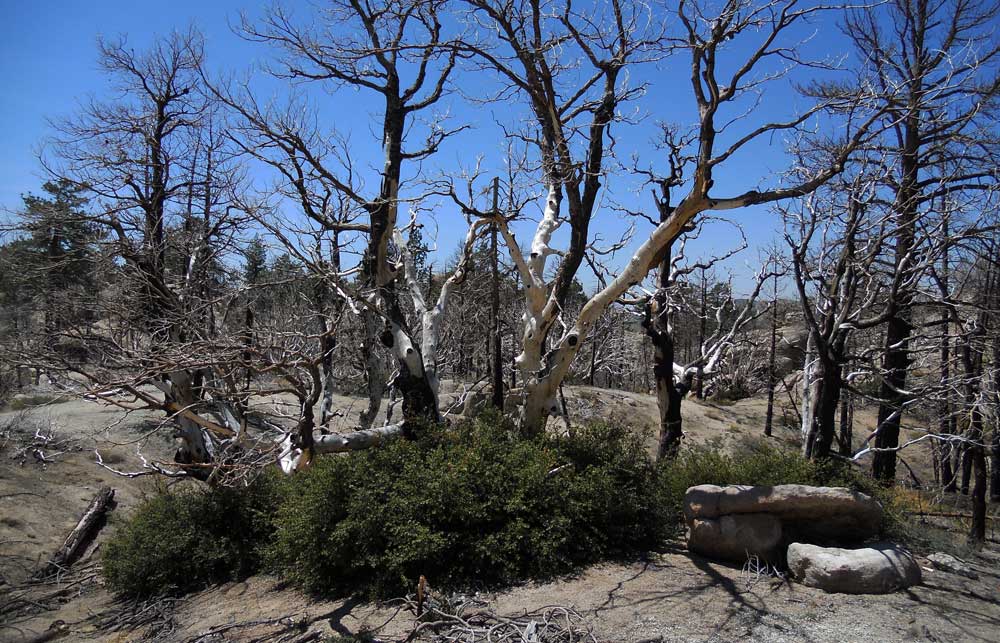 And there are other plants that can do this too! Have you ever seen a grove of Aspen trees? Actually you are seeing a grove of Aspen tree – it’s all the same tree! Aspens send up multiple stems from the same root systems. They use an underground branching system called rhizomes to connect the trunks. Fires help stimulate growth from these rhizomes and promote the aspen to send up more shoots.
And there are other plants that can do this too! Have you ever seen a grove of Aspen trees? Actually you are seeing a grove of Aspen tree – it’s all the same tree! Aspens send up multiple stems from the same root systems. They use an underground branching system called rhizomes to connect the trunks. Fires help stimulate growth from these rhizomes and promote the aspen to send up more shoots.
One of the two aspen groves in Southern California was burned in the Lake Fire. Thanks to this underground root system and the Aspen’s adaptations to fire, the grove is already resprouting and is expected to recover well.
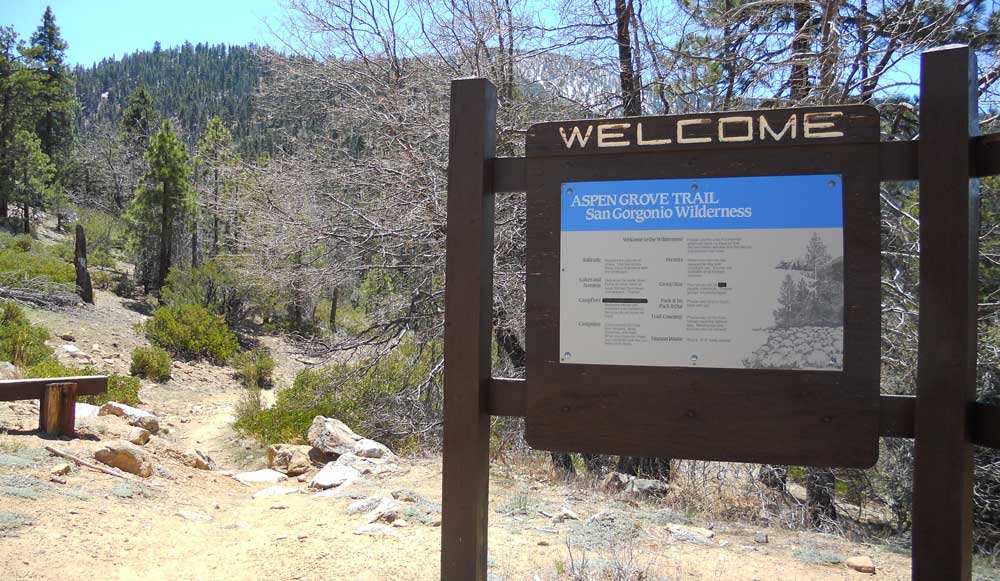 High-Intensity Burns
High-Intensity Burns
In a high intensity burn, most trees in a stand die along with any roots or debris that held soil in place. The soil itself loses many of its nutrients including nitrogen and phosphorus – both important nutrients to plant growth – as well as bacteria and fungi which help to process nutrients in the soil. Soil also becomes “hydrophobic” – that means it repels water instead of absorbing the much-needed moisture.
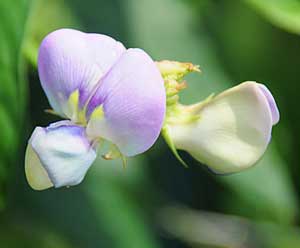
The flower of the pea plant is characteristic of Fabaceae, the legume family.
In many cases, the first thing that must happen in these scenarios is for nitrogen-fixing lichens and plants to begin growing. Nitrogen-fixing plants have a friendly relationship with bacteria that live in their roots. These bacteria are able to take nitrogen from the air and “fix” it into a form that plants can use to grow. Nitrogen-fixers include many plants like lupine, alfalfa, peas, clovers, and even alder.
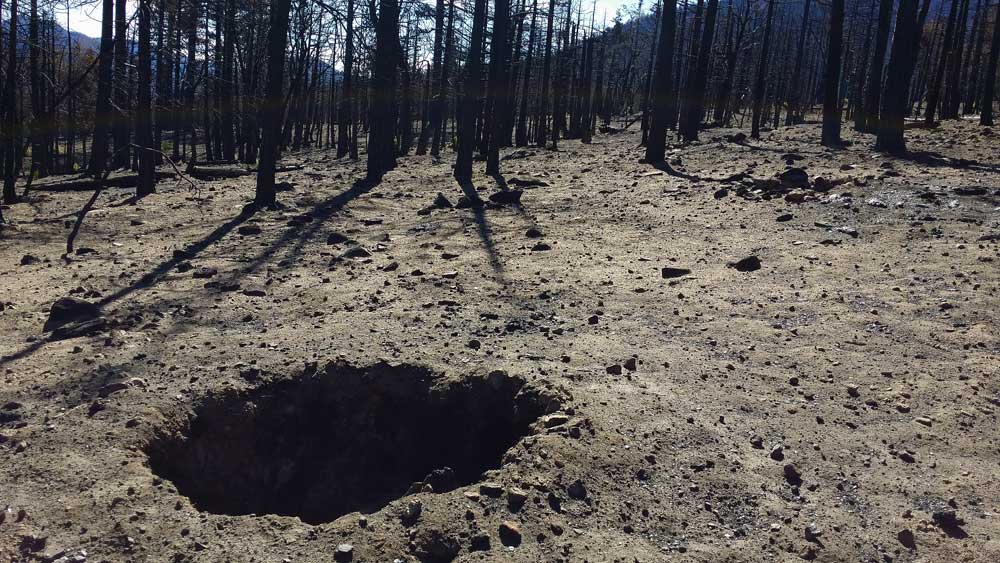 When these plants die, or lose leaves, they release the much-needed nitrogen directly back into the soil, and add dead matter to the ground cover which then helps the forest to absorb and keep more moisture.
When these plants die, or lose leaves, they release the much-needed nitrogen directly back into the soil, and add dead matter to the ground cover which then helps the forest to absorb and keep more moisture.
This is not all that we will be able to see in the coming months; what I described above is a typical kind of succession, but every forest is different and it will be exciting to see what happens to ours! Stay tuned…
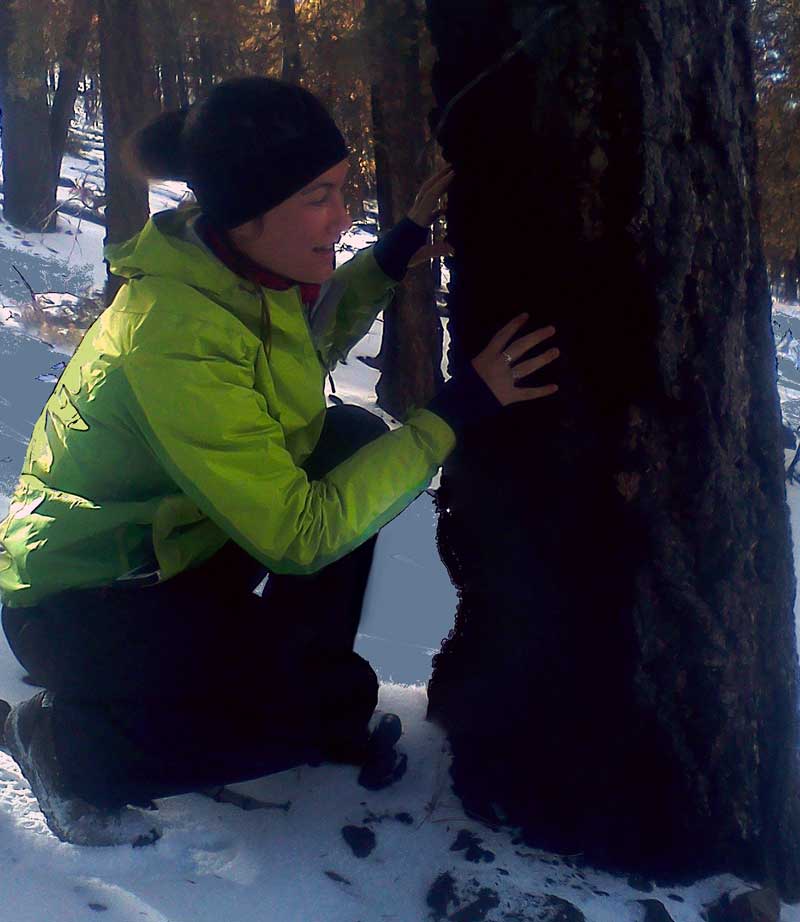
Mari hanging out with a burned tree.
Mari’s Citations
Aspen Regenerating. Digital image. San Bernardino National Forest. USDA Forest Service, n.d. Web. 3 Jan. 2016.
Graham, R. T., and Jain, T. B. 2005. Ponderosa Pine Ecosystems. USDA Forest Service Gen. Tech. Rep. PSW-GTR-198. 2005.
McCook, L. 1994. Understanding ecological community succession: causal models and theories, a review. Vegetation 110:115-147.
Rau, B. M., R. R. Blank, J. C. Chambers, and D. W. Johnson. 2007. Prescribed fire in a Great Basin sagebrush ecosystem: Dynamics of soil extractable nitrogen and phosphorus. Journal of Arid Environments 71:362-375.
Strauhmanis, Ervins. Brackenfern Regrowth Post Fire. Digital image. Sunnyscope. N.p., 30 Sept. 2013. Web. 3 Jan. 2016.
United States of America. Department of Agriculture Forest Service. New York State Conservation Dept. One Careless Match… Yours? Remember – Only You Can PREVENT FOREST FIRES! N.p.: n.p., 1952. Web.
Youngblood, Andrew, Matt Busse, and Gregg Riegel. Old-growth ponderosa pine in the Metolius Research Natural Area in central Oregon Effects of reintroducing fire in eastside ponderosa pine forests. Digital image. Pacific Northwest Research Station. USDA Forest Service, 17 June 2014. Web. 3 Jan. 2016.
At High Trails Outdoor Science School, we literally force our instructors to write about elementary outdoor education, teaching outside, learning outside, our dirty classroom (the forest…gosh), environmental science, outdoor science, and all other tree hugging student and kid loving things that keep us engaged, passionate, driven, loving our job, digging our life, and spreading the word to anyone whose attention we can hold for long enough to actually make it through reading this entire sentence. Whew…. www.dirtyclassroom.com
- McBride, Joe R.; Jacobs, Diana F. 1980. Land use and fire history in the mountains of southern California. In: Stokes, Marvin A.; Dieterich, John H., technical coordinators. Proceedings of the fire history workshop; 1980 October 20-24; Tucson, AZ. Gen. Tech. Rep. RM-81. Fort Collins, CO: U.S. Department of Agriculture, Forest Service, Rocky Mountain Forest and Range Experiment Station: 85-88 ↩

Comments are closed.